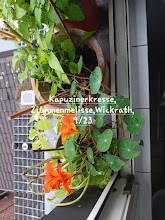
dali48 and writing books and cycling and photographing etc...
Source: dali48
June 25, 2012 - Kimono and Japan... by dali48 on HP
27.01.2010 - Interpretation of dali48
Magic of Silk. It is a piece of traditional Japanese culture - the kimono. The long one-piece dress stands out for its color and elegance. A hand-made kimono can cost up to... - The film authors S. Brand, N. Graef show the kimono from various perspectives - They observe the production of a handmade silk kimono on the island of Amami Oshima and the manufacture of precious obis in Kyoto - They take a look at the ritualized life of kimono-wearing geishas - visit a kimono-school in Tokyo, are guests at a traditional Japanese wedding and watch the annual election of the Kimono Queen... (ARTE, Documentation, 27.01.2010)
21.10.2013 - Interpretation of dali48
The kimono is a Japanese traditional garment worn by men, women and children - The word "kimono", which literally means a "thing to wear" (ki "wear" and mono "thing"), has come to denote these full-length robes... - Today, kimono are most often worn by women, and on special occasions... - Men wear the kimono most often at weddings, tea ceremonies, and other very special or very formal occasions... - Professional sumo wrestlers are often seen in the kimono because they are required to wear traditional Japanese dress whenever appearing in public... - The pattern of the kimono can also determine in which season it should be worn. For example, a pattern with butterflies or cherry blossoms would be worn in spring... - Geisha like all Japanese nouns, has no distinct singular or plural variants. The word consists of two kanji, 芸 (gei) meaning "art" and 者 (sha) meaning "person" or "doer"... - World War II brought a huge decline in the geisha arts because most women had to go to factories or other places to work for Japan... - "The biggest industry in Japan is not shipbuilding, producing cultured pearls, or manufacturing transistor radios or cameras. It is entertainment"... - “The world of the geisha, the "flower and willow" world, are very separate societies that are shrouded in mystery... - Modern geisha still live in traditional geisha houses called okiya in areas called hanamachi (花街 "flower towns")... - Geisha still study traditional instruments: the shamisen, shakuhachi, and drums, as well as learning games, traditional songs, calligraphy, Japanese traditional dances, tea ceremony, literature, and poetry... (Wikipedia)
 dali48 and writing books and cycling and photographing etc...
dali48 and writing books and cycling and photographing etc...
Magic of Silk. It is a piece of traditional Japanese culture - the kimono. The long one-piece dress stands out for its color and elegance. A hand-made kimono can cost up to... - The film authors S. Brand, N. Graef show the kimono from various perspectives - They observe the production of a handmade silk kimono on the island of Amami Oshima and the manufacture of precious obis in Kyoto - They take a look at the ritualized life of kimono-wearing geishas - visit a kimono-school in Tokyo, are guests at a traditional Japanese wedding and watch the annual election of the Kimono Queen... (ARTE, Documentation, 27.01.2010)
21.10.2013 - Interpretation of dali48
The kimono is a Japanese traditional garment worn by men, women and children - The word "kimono", which literally means a "thing to wear" (ki "wear" and mono "thing"), has come to denote these full-length robes... - Today, kimono are most often worn by women, and on special occasions... - Men wear the kimono most often at weddings, tea ceremonies, and other very special or very formal occasions... - Professional sumo wrestlers are often seen in the kimono because they are required to wear traditional Japanese dress whenever appearing in public... - The pattern of the kimono can also determine in which season it should be worn. For example, a pattern with butterflies or cherry blossoms would be worn in spring... - Geisha like all Japanese nouns, has no distinct singular or plural variants. The word consists of two kanji, 芸 (gei) meaning "art" and 者 (sha) meaning "person" or "doer"... - World War II brought a huge decline in the geisha arts because most women had to go to factories or other places to work for Japan... - "The biggest industry in Japan is not shipbuilding, producing cultured pearls, or manufacturing transistor radios or cameras. It is entertainment"... - “The world of the geisha, the "flower and willow" world, are very separate societies that are shrouded in mystery... - Modern geisha still live in traditional geisha houses called okiya in areas called hanamachi (花街 "flower towns")... - Geisha still study traditional instruments: the shamisen, shakuhachi, and drums, as well as learning games, traditional songs, calligraphy, Japanese traditional dances, tea ceremony, literature, and poetry... (Wikipedia)
Geisha (芸者) geiko (芸子), or geigi (芸妓) are Japanese women who entertain through ..... These women dressed in kimono and imitated the look of geisha.
The Japanese tea ceremony, also called the Way of Tea, is a Japanese cultural activity involving the ceremonial preparation and presentation of matcha (抹茶), ...
 dali48 and writing books and cycling and photographing etc...
dali48 and writing books and cycling and photographing etc...
see dali48 and warning of neo-fascism since 1989 and Climate Change since ca. 2000 and "Banking Crisis" 2008 and poor people and social diseases and speculation and homelessness and robots etc. - instead of UBI & Ecology - Uncontrolled capitalism produces evil as bees produce...
see dali48 and Climate Change and heat waves and dryness and burning and also floods and Hurricanes etc. - since ca. 2000 and despite Copenhagen 2009 etc. - instead of #ZeroHunger, solar & wind energy & UBI etc...


 henk tennekes
henk tennekes 
Keine Kommentare:
Kommentar veröffentlichen